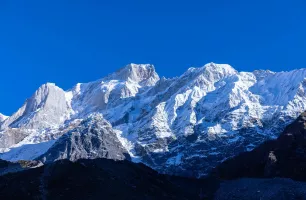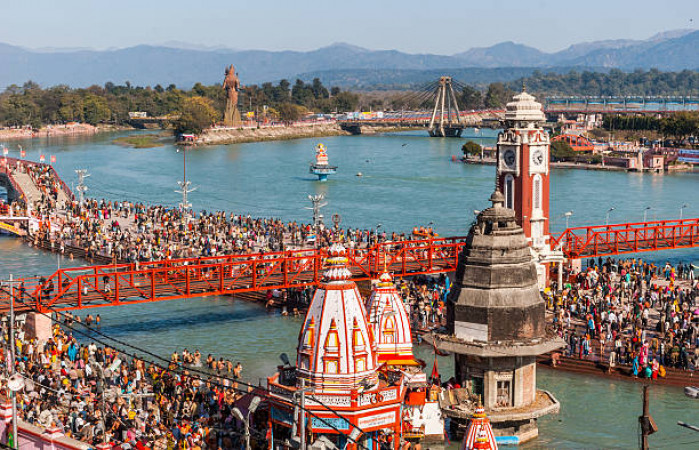
Yamunotri
Package
15000 to 25000
15000 to 25000
Duration
2 to 4 Days
2 to 4 Days
Best time to visit
May-Jun, Sep-Oct
May-Jun, Sep-Oct
Theme
Religious, Hill Station
Religious, Hill Station
Yamunotri Travel Guide
Yamunotri, located in the Uttarkashi district of Uttarakhand, India, is a significant pilgrimage site for Hindus. Nestled in the Garhwal Himalayas, it is famous for being the source of the Yamuna River. The region holds immense religious importance as it is one of the Char Dham pilgrimage sites.Top Attractions in Yamunotri
- Yamunotri Temple
- Surya Kund
- Divya Shila
- Janki Chatti
- Kharsali
Yamunotri is Famous for
Yamunotri is most famous for being the origin of the sacred Yamuna River.Top Attractions in Yamunotri
- Yamunotri Temple
- Surya Kund
- Divya Shila
- Janki Chatti
- Kharsali
What's Great about Travelling to Yamunotri?
- Experience spiritual bliss
- Enjoy scenic beauty
- Explore ancient temples
What's Not So Great about Travelling Yamunotri?
- Harsh weather conditions
- Limited accommodation options
- Difficult terrain for travel
Travel Tips for Yamunotri
- Carry sufficient warm clothing
- Start the trek early in the morning
- Stay hydrated and carry snacks
Important Yamunotri trip information
- Ideal Duration: 2-3 days
- Best Time to Visit: May to June, September to October
- Nearby Airports and Railway Stations: Jolly Grant Airport (Dehradun), Dehradun Railway Station
Top 9 Places to visit in Yamunotri
Per Person
9,500
*EXCLUDING APPLICABLE TAXES Per Person
11,910
*EXCLUDING APPLICABLE TAXES 3.9 Ratings
( 74 Reviews )
( 74 Reviews )
Per Person
15,160
*EXCLUDING APPLICABLE TAXES 3.9 Ratings
( 74 Reviews )
( 74 Reviews )
Per Person
17,500
*EXCLUDING APPLICABLE TAXES 4.5 Ratings
( 31 Reviews )
( 31 Reviews )
Per Person
17,500
*EXCLUDING APPLICABLE TAXES 4.5 Ratings
( 31 Reviews )
( 31 Reviews )
Per Person
48,500
*EXCLUDING APPLICABLE TAXES 4.3 Ratings
( 37 Reviews )
( 37 Reviews )
FAQ's on Yamunotri
Q1: What is the best time to visit Yamunotri?
The best time to visit Yamunotri is during the summer months from May to June and then again in September. During these times, the weather is pleasant, and the trekking conditions are favorable. However, if you want to witness the beauty of snow-covered landscapes, then visiting in the winter months from October to April is ideal. It's important to avoid the monsoon season from July to August due to heavy rainfall and landslides.
Q2: Do I need a visa to travel to Yamunotri?
As Yamunotri is located in India, most foreign tourists will require a tourist visa to visit. Make sure to check the specific visa requirements based on your nationality before planning your trip. Some countries may have visa exemptions or visa-on-arrival facilities for tourism purposes.
Q3: What are the must-visit attractions in Yamunotri?
Yamunotri Temple, dedicated to Goddess Yamuna, is the main attraction in Yamunotri. The hot water spring at Janki Chatti, Surya Kund, and Divya Shila are also popular spots. The trek to Kharsali village and the scenic beauty of the surrounding Himalayan ranges make for a memorable experience.
Q4: Is Yamunotri a safe place to travel?
Yamunotri is generally a safe place for tourists. However, it's essential to be cautious while trekking or traveling in remote areas. Avoid trekking alone, especially in the evenings, and follow the guidance of local authorities. Be mindful of your belongings and surroundings to ensure a safe trip.
Q5: What is the local currency in Yamunotri and can I use credit cards?
The local currency in India is the Indian Rupee (INR). While credit cards are accepted in some hotels and larger establishments in major cities, it's advisable to carry cash when visiting Yamunotri. ATMs may not be readily available in remote areas, so it's best to plan accordingly.
Q6: What is the local cuisine like in Yamunotri?
Yamunotri offers a variety of North Indian cuisine with influences from Garhwali and Kumaoni dishes. Popular dishes include Rajma Chawal (kidney beans with rice), Aloo ke Gutke (spiced potatoes), and Kumaoni Raita. Don't miss trying the local Garhwali bread called Mandua ki Roti with Gahat ki Dal.
Q7: What transportation options are available in Yamunotri?
Transportation in Yamunotri primarily includes trekking and pony rides due to its remote location. You can trek from Janki Chatti to Yamunotri Temple or hire a pony for the journey. Shared jeeps or buses are also available for shorter distances. Private taxis can be arranged from nearby towns for a more comfortable ride.
Q8: Are there any cultural norms or etiquette I should be aware of when visiting Yamunotri?
When visiting Yamunotri, it's essential to respect the local customs and traditions. Dress modestly, especially when visiting religious sites like the Yamunotri Temple. Remove your shoes before entering temples and seek permission before taking photographs of locals. Greet people with a 'Namaste' and be mindful of local beliefs and practices.
Q9: I am a travel agent. How can I buy travel leads of Yamunotri?
Register yourself as a travel agent at agents.tripclap.com and then you can buy travel leads to Yamunotri once your account is approved. For more details contact our support team at +91-8069186564 or support@tripclap.com
![DIVINE HEIGHTS : GANGOTRI & YAMUNOTRI PILGRIMAGE [5D/4N]](https://static.tripclap.com/uploads/package/350X200/1744282112-1744282112-7148e.webp)










